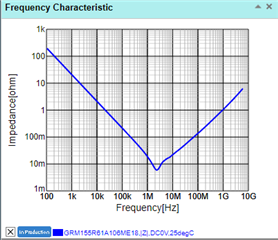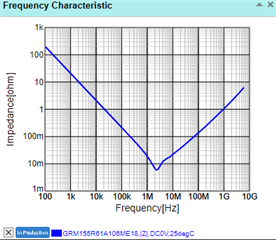Hello all,
The OPA356 datasheet says: "A 10µF ceramic bypass capacitor is the minimum recommended value; adding a 1µF or larger tantalum capacitor in parallel can be beneficial when driving a low-resistance load. Providing adequate bypass capacitance is essential to achieving very low harmonic and intermodulation distortion."
According to the datasheet, I need to place a minimum 10µF ceramic bypass capacitor in order for the Op Amp to function well. However, if we see the graph impedance versus frequency, we will notice that most of the 10µF capacitors will act as an inductor for high-frequencies. Below are some examples from muRata design tool.



So, for high-frequencies, should I use a bypass capacitor that works as a capacitor in my frequency range? Or should I follow the datasheet and use a minimum 10µF ceramic bypass capacitor?
Thank you in advance.
Best regards,
João Rego

